
Sforza Castle or Castello Sforzesco is one of the main symbols of the history of Milan. The castle was built in the fifteenth century by the Duke of Milan, Francesco Sforza, on the remains of a previous fortification dating back to the fourteenth century, known as Castrum Porte Jovis (Castle of Port Jovia or Zobia).
Throughout its long history, the castle has repeatedly undergone significant transformations. In the 16th and 17th centuries, it was one of the largest strongholds in Europe. Currently, Sforza Castle is home to important cultural institutions and tourist destinations.
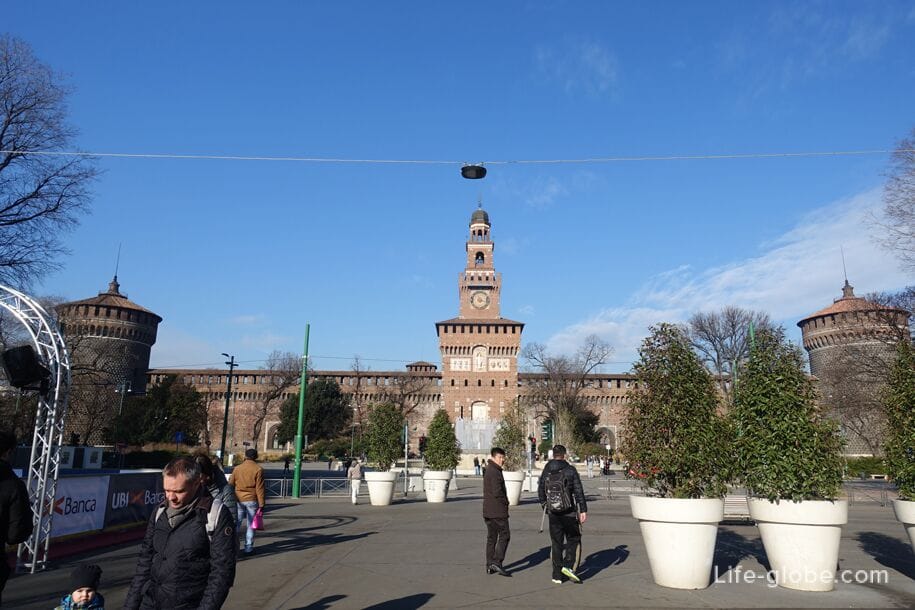
Interesting! The appearance of the parts of the Sforza castle was a model for the construction of the Moscow Kremlin that is clearly expressed in the form of towers and battlements of the walls. For this reason, it is possible to hear the castle is also called the Milanese Kremlin, however, based on history, rather, it is the Kremlin need to call Moscow Sforza.
Located in the Sforza castle in Milan's historic centre, the castle square (Piazza Castello) and symbolizes the main entrance to the Parco Sempione. Sempione Park was established on the former site of the parade ground near the castle.
In front of the main entrance to the castle, in Piazza Castello you can see the eponymous fountain (Fontana di Piazza Castello), reminiscent of cake. No wonder the fountain is called the "Wedding cake".
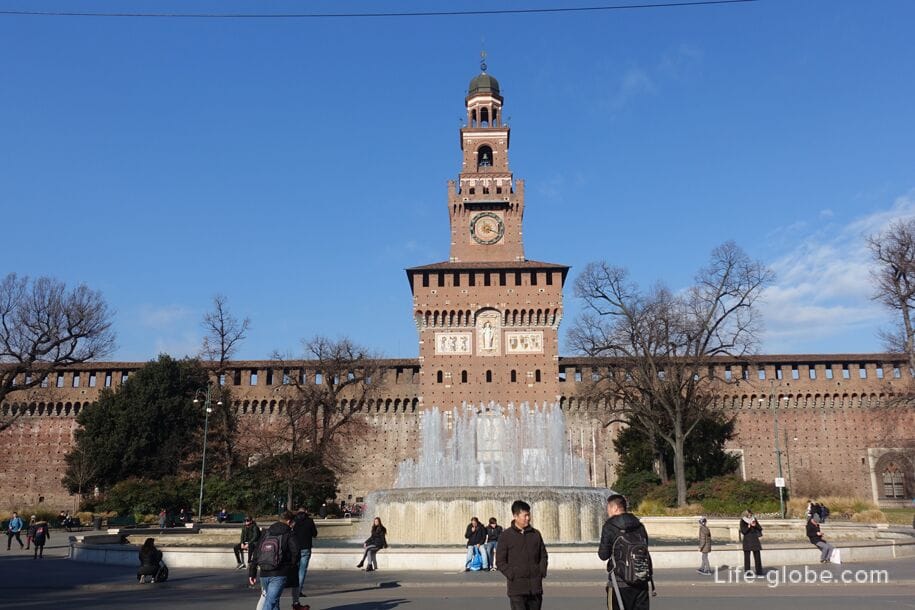
Currently the castle has been restored and with open arms welcomes guests. Outside the castle you can see the impressive walls and towers and gates, i.e. to sleep in a castle with four sides, on bridges spanning the ditches.
Behind the fountain in the form of a cake are the main gate and the main tower of the castle - tower of Filaret (La torre del Filarete). The Torre del filarete is the highest and probably the most impressive castle tower. This multi-tiered square tower reaches almost 71 meters in height.
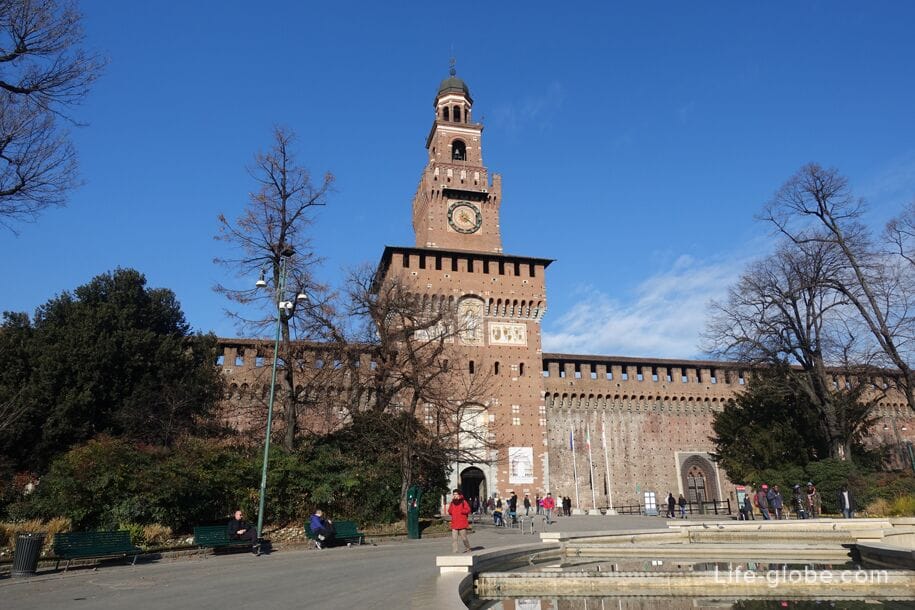
The main gate leads to the inner courtyard of the castle. Inside the castle is strictly proportional. Here you can see the open areas - the three courtyards, the main - the largest and two smaller ones - the Rocchetta and the Ducal court.
And in the castle walls is the Museum castle complex Sforza, consisting of libraries and several museums related to the history and culture of Milan and directly with the Sforza castle. For example, the art Museum of the Castello Sforzesco, the Museum of the history of the castle, the Egyptian Museum, the Museum of ancient art, musical instruments Museum, the Museum of furniture and wooden sculptures, etc.
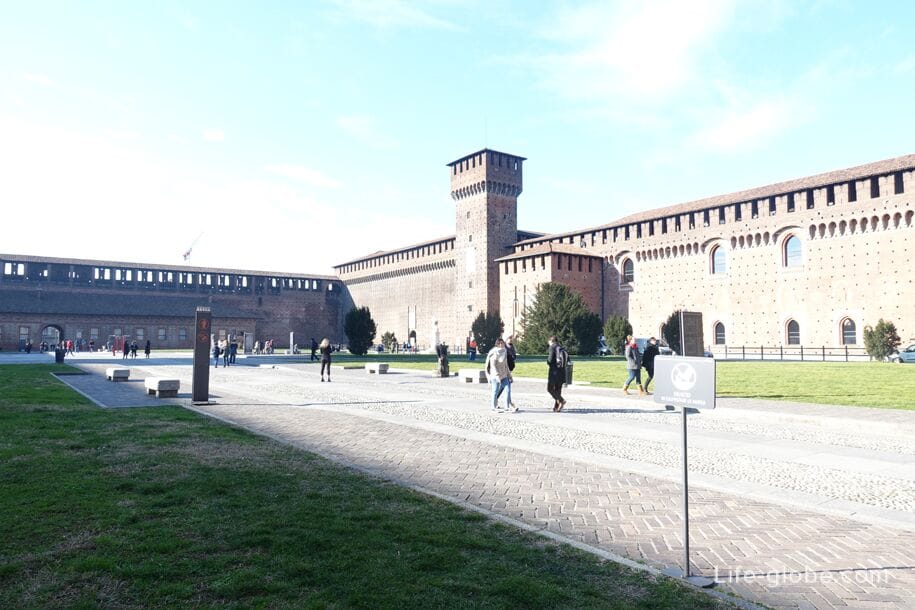
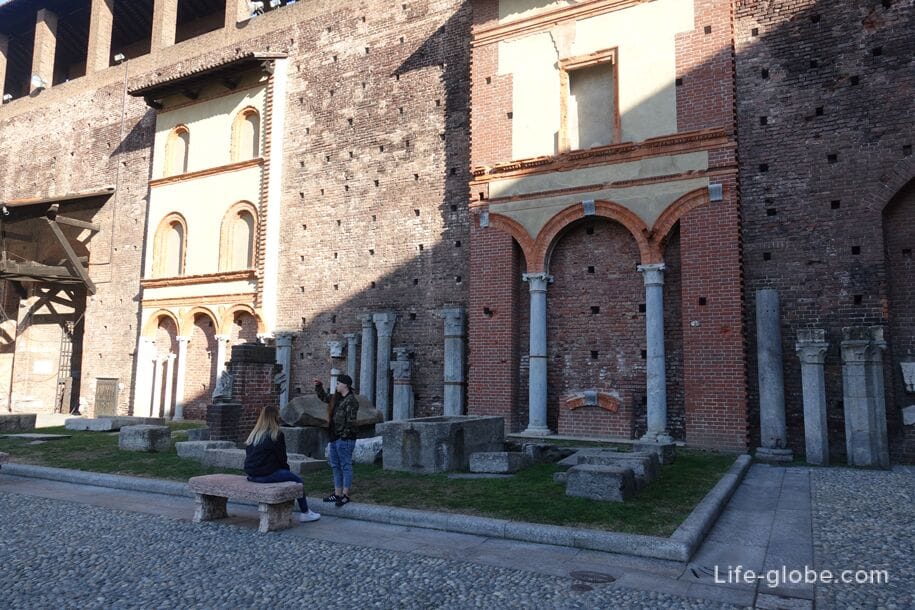

Rocchetta (La Rocchetta) is the most inaccessible part of the castle where they could take refuge in case of attack. Pass in Raketu from the main courtyard of the castle.
Rocchetta consists of a small square courtyard with four sides by walls five stories high.

The Rocchetta is guarded by two towers: tower of bona di Savoia (La torre di Bona di Savoia), located between Rochette and a springboard, and tower of Castellana, in the Western corner of the castle. Tower under the name "bona" was built in 1477.
Interior Rockette with the Tower of bona di Savoia
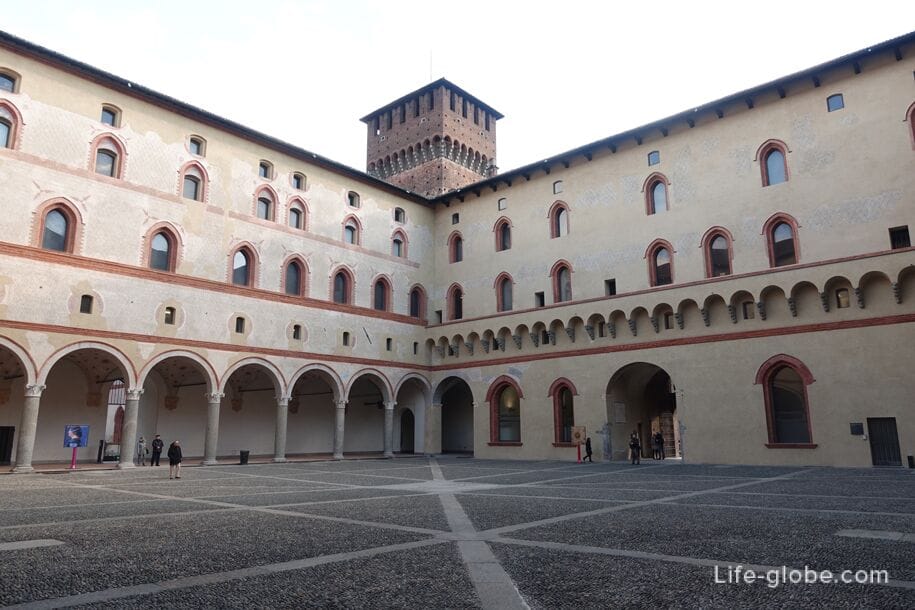
The Ducal court (La Corte Ducale) - interior of the castle with greenery and swimming pool, which is one of the three courtyards. In this place in the Renaissance were apartments of the Dukes and the centre of court life. The court is U-shaped and occupies the Northern part of the castle. It was built and decorated in the second half of the fifteenth century. Despite the fact that during the four subsequent centuries the Ducal court was turned into a barracks and damaged and changed, restoration of the nineteenth century restored the appearance and decoration of the Renaissance.
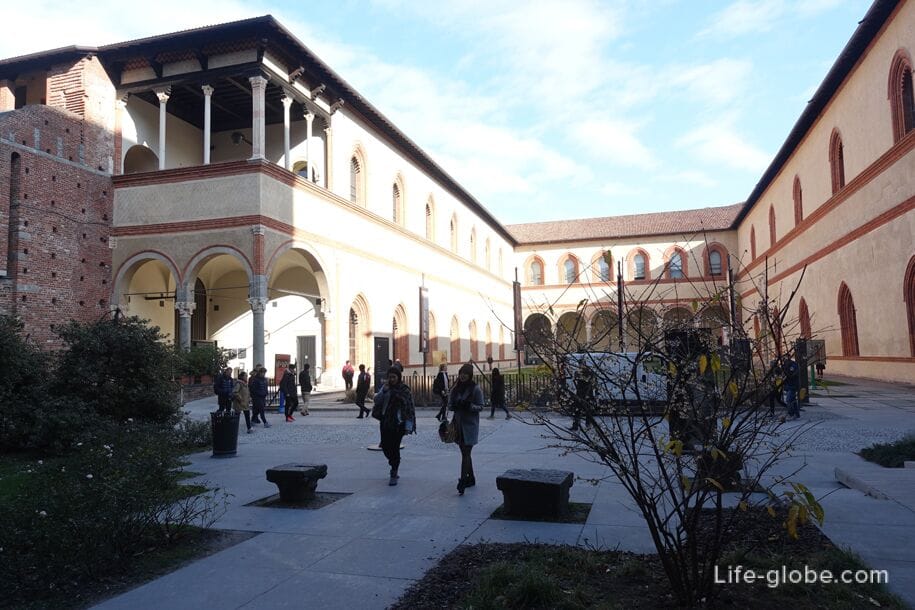

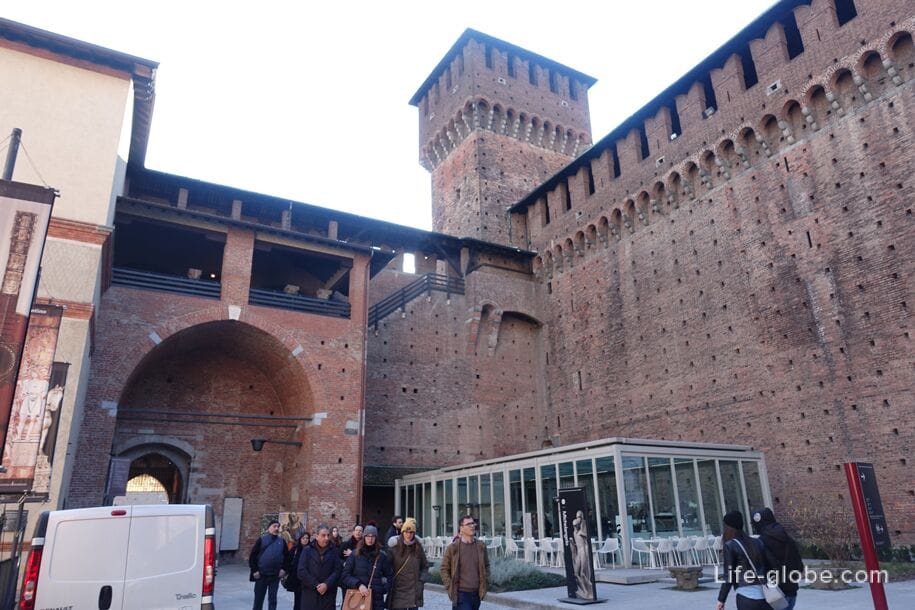
The back wall of the court is occupied by so-called "Portico of the elephant" (Portico Dell'elefante) supported by stone columns, where a faded mural depicting exotic animals including lion and elephant. This mural called mural of an elephant. Currently, under the porch is a tombstone, in Latin characters, which stood in front of the "Infamous column" in today's Piazza Wind, built in 1630 and taken down in 1778. The column was erected on the site of the house of Gian Giacomo Mora, unjustly accused of spreading the plague, for which he was first tortured and then executed.

The rear facade of the castle is the oldest and corresponds to the structure of the fourteenth century, erected by Galeazzo Visconti. Here are some of the four gates of the castle. The gate bridge is called the bridge of Ludovico Il Moro (ponticella di Ludovico il Moro) leads directly to the Park Sempione.
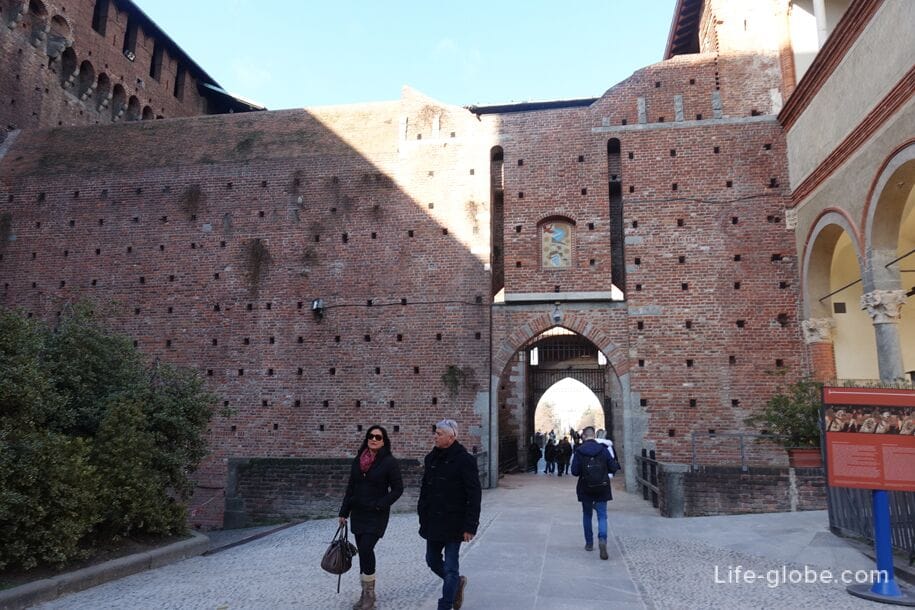
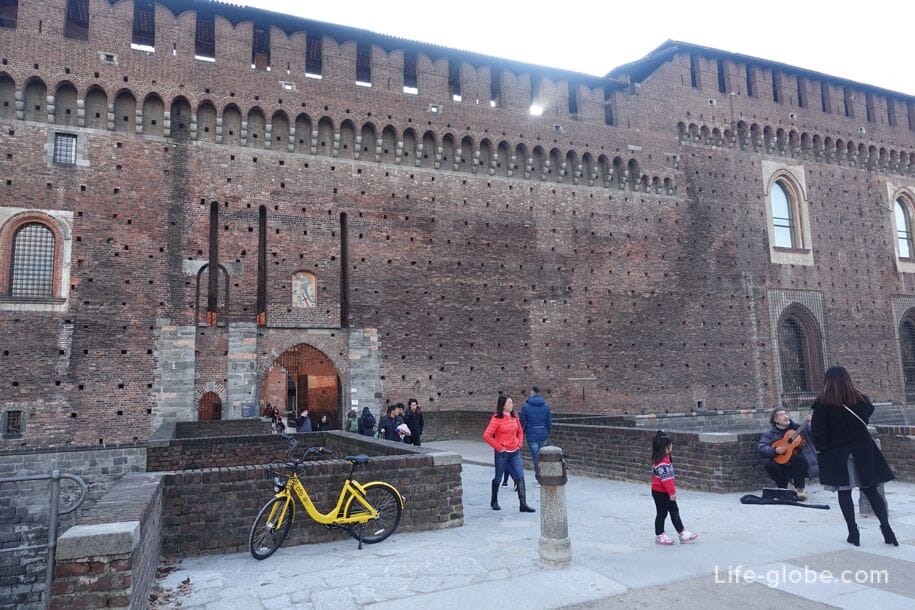
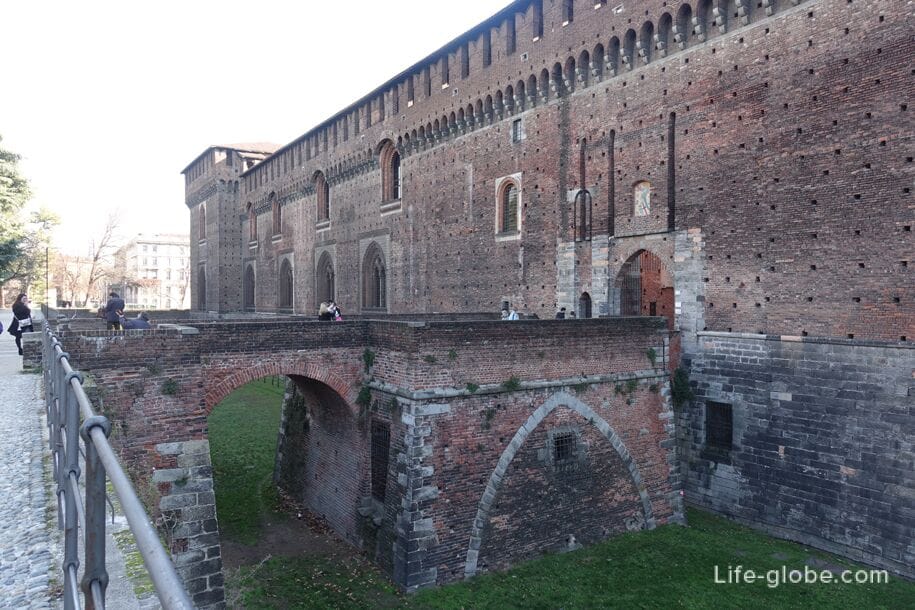
Right (North-East) entrance to the Sforza castle

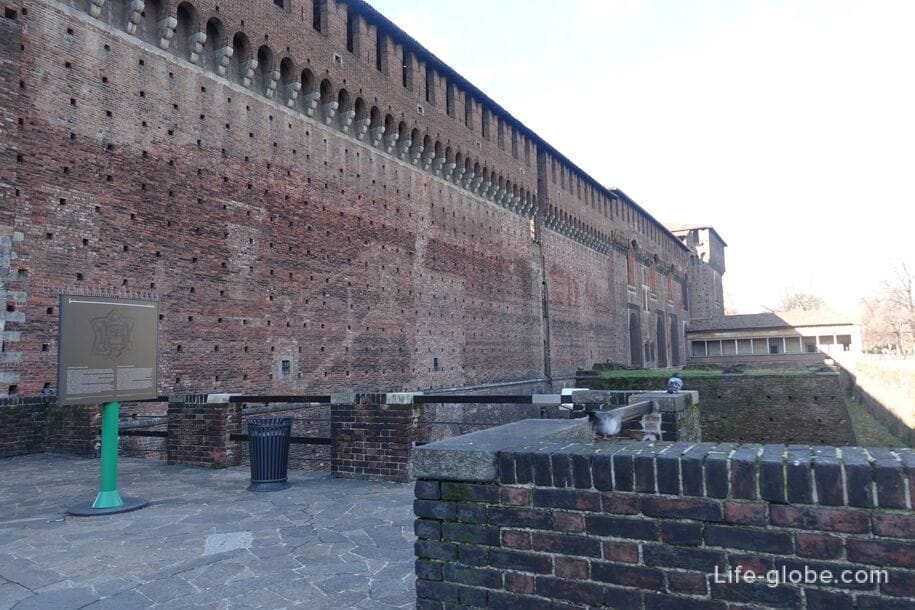
Left (South-West) entrance to the Sforza castle
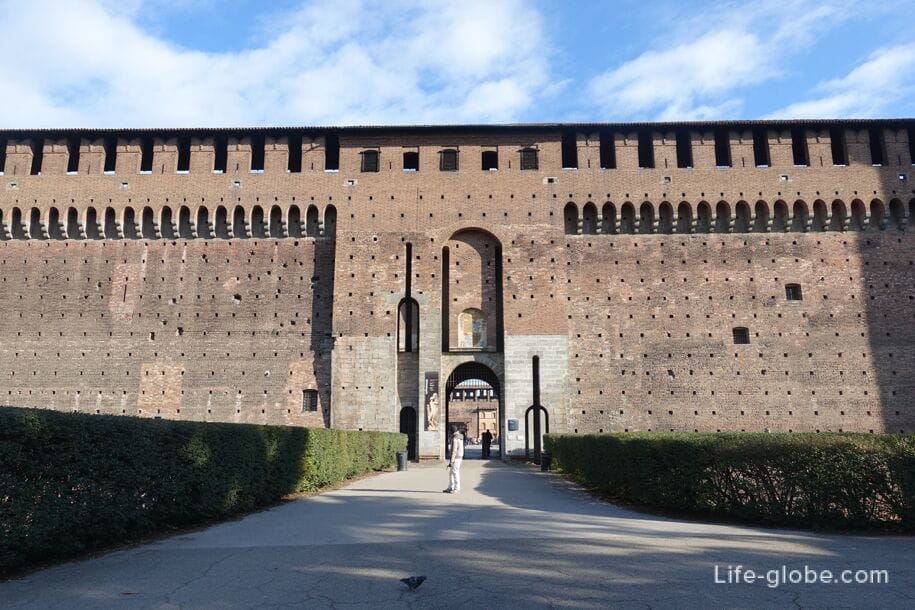
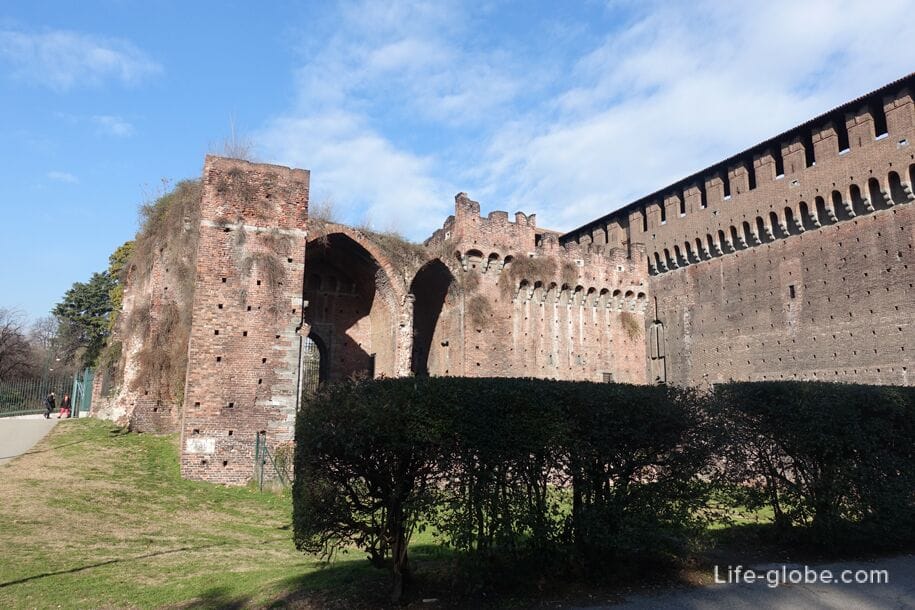
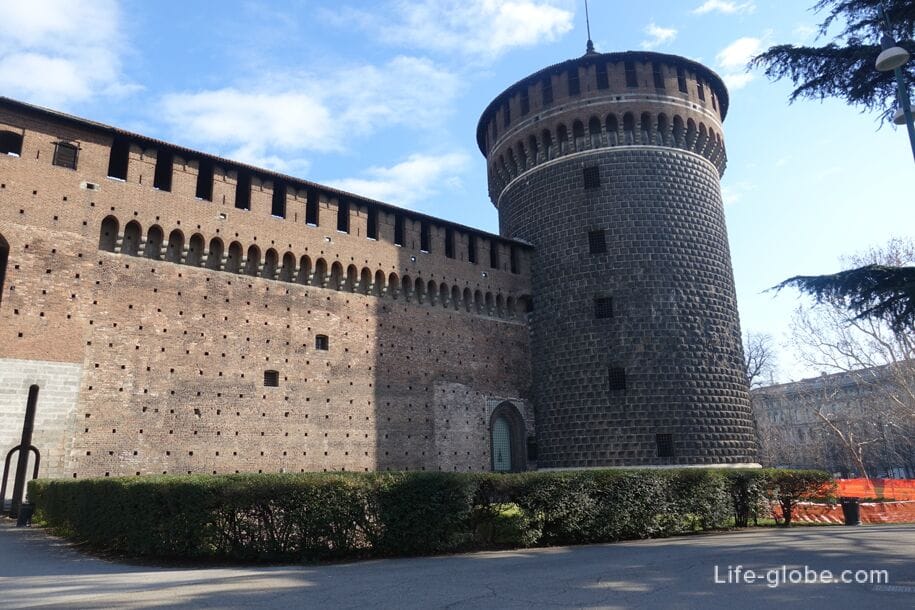
On a daily basis. From November to March: from 07:00 to 18:00 from April to October: from 07:00 to 19:00 hours. Entrance to the castle is free (free) but the entrance to the museums will have to pay (there is a system of discounts and flexible schedule free visits).
All accommodation facilities in Milan, including in the city center and more remote from it, can be viewed and booked here